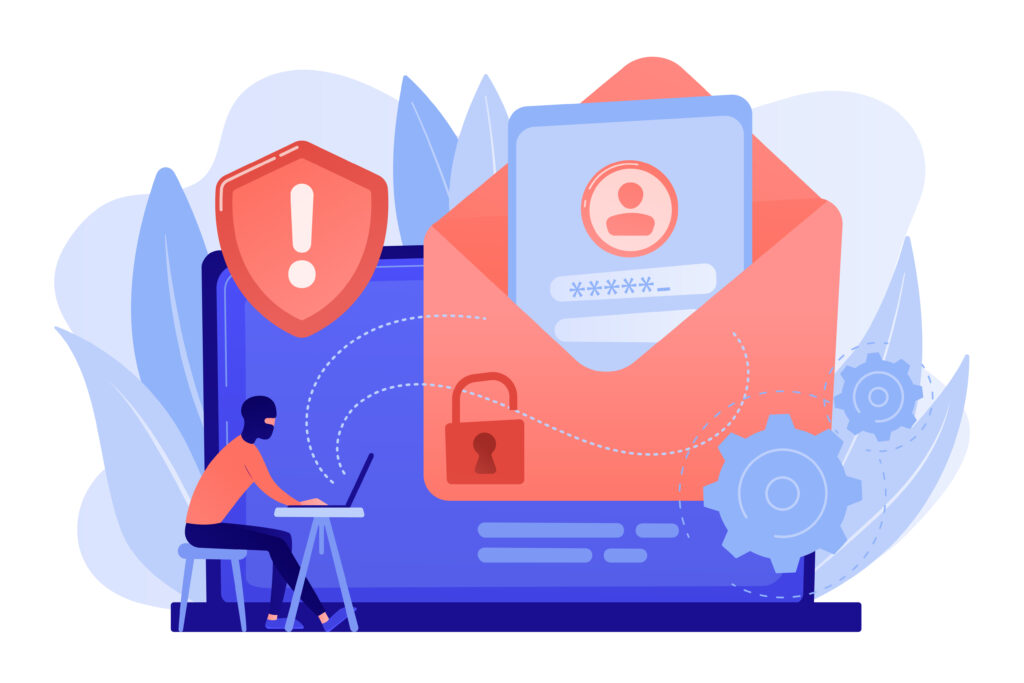In the age of digital communication, phishing emails have become a prevalent and persistent threat. Phishing is a deceptive practice where cybercriminals impersonate legitimate organizations or individuals to trick recipients into revealing sensitive information, such as login credentials, credit card details, or personal identification. Recognizing phishing emails is crucial for protecting yourself and your personal information online. In this article, we will explore real-life phishing email examples and provide valuable tips on how to identify and avoid falling victim to these scams.

Example 1: Fake Account Verification
Subject: Urgent: Verify Your Account Now!
- Sender: “Account Services” [email protected]
- Message: This email urges you to verify your account immediately to prevent it from being suspended. It includes a link that leads to a seemingly legitimate login page asking for your username and password.
How to Recognize It:
- Generic Greeting: The email starts with a generic salutation like “Dear Customer” or “Hello User” instead of addressing you by name.
- Unusual Sender Address: Check the sender’s email address. Legitimate organizations typically use domain-specific email addresses, not generic ones.
- Urgent Language: Phishing emails often use urgent language to pressure you into taking immediate action.
- Hover Over Links: Hover your mouse over any links without clicking on them to see where they lead. In this case, the link doesn’t match the legitimate website’s URL.
Example 2: PayPal Account Alert
Subject: Your PayPal Account Has Been Suspended
- Sender: “PayPal Security Team” [email protected]
- Message: The email claims that your PayPal account has been suspended due to suspicious activity. It asks you to click on a link to confirm your identity and restore access.
How to Recognize It:
- Verify Email Domain: Double-check the sender’s email domain. PayPal uses “@paypal.com” for official communications, not a third-party domain.
- Grammar and Spelling: Look for typos, grammatical errors, or awkward language in the email. Legitimate organizations generally proofread their messages.
- Generic Greeting: Like many phishing emails, this one uses a generic greeting instead of addressing you by name.
- Hover Over Links: Always hover over links to examine the destination. In this case, the link does not lead to PayPal’s official website.
Example 3: Tax Refund Scam
Subject: Tax Refund Notification
- Sender: “IRS Tax Refund” [email protected]
- Message: This phishing email claims that you are eligible for a tax refund and asks you to click on a link to submit your refund request. It may also request personal and financial information.
How to Recognize It:
- Verify Sender Domain: The email claims to be from the IRS but uses a domain that is not associated with the official IRS website.
- Unsolicited Request: Be cautious of unsolicited emails offering money, especially tax refunds.
- Suspicious Attachments or Links: Never download attachments or click on links in emails like this. The IRS typically communicates through official channels.
Example 4: Lottery Winner Scam
Subject: Congratulations! You’ve Won a Lottery Prize!
- Sender: “National Lottery” [email protected]
- Message: This phishing email informs you that you’ve won a substantial lottery prize but must provide personal and financial information to claim it.
How to Recognize It:
- Verify Sender: The sender’s email address doesn’t match the official website of the National Lottery.
- Unexpected Winnings: Be cautious if you receive notifications about winning contests or lotteries you didn’t enter.
- Request for Personal Information: Legitimate lotteries do not require you to provide personal or financial information via email.
Example 5: Banking Alert
Subject: Important Security Alert: Verify Your Banking Details
- Sender: “Your Bank” [email protected]
- Message: This email warns you about a security breach and asks you to click on a link to verify your banking details, including your account number and password.
How to Recognize It:
- Check Sender Domain: Examine the sender’s email domain. It doesn’t match the official domain of your bank.
- Suspicious Links: Be cautious of emails with links that lead to unknown or non-standard domains.
- Phishing Language: Phishing emails often use scare tactics, urging you to take immediate action.
Tips to Recognize Phishing Emails:
-
Check the Sender’s Email Address: Verify the sender’s email domain to ensure it matches the official domain of the organization they claim to represent.
-
Inspect the Greeting: Legitimate organizations usually address you by your name, not with generic terms like “Dear Customer.”
-
Examine the Language: Look for spelling and grammar errors, awkward language, or excessive urgency in the email.
-
Hover Over Links: Hover your mouse pointer over any links in the email to preview where they lead before clicking.
-
Beware of Unsolicited Emails: Be cautious of unsolicited emails, especially those offering money, prizes, or urgent requests for personal information.
-
Use Official Websites: If you receive an email prompting you to take action, such as verifying an account, go directly to the official website by typing the URL into your browser rather than clicking on email links.
-
Enable Email Filtering: Use email filtering tools or services that can help identify and flag potential phishing emails.
Conclusion
Phishing emails are a persistent threat, but with vigilance and awareness, you can recognize and avoid falling victim to them. Always be skeptical of unsolicited emails, verify the sender’s identity, and never click on suspicious links or provide personal information without proper verification. By staying cautious and informed, you can protect yourself from phishing scams and keep your online accounts and information secure.